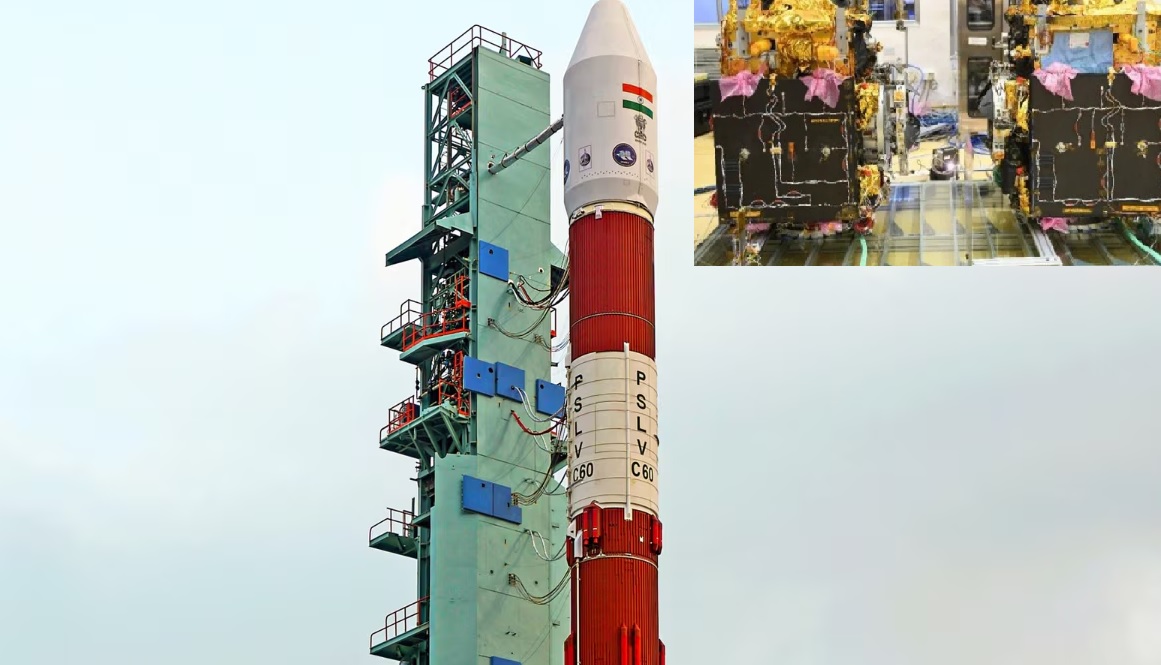Why ISRO Chose January 7 for SpaDeX Docking Experiment

The Space Docking Experiment (SpaDeX), launched by the Indian Space Research Organisation (ISRO) on December 30, 2024, is set to make history. Scheduled for January 7, 2025, this ambitious mission will demonstrate India's capability to dock two spacecraft in orbit—a technological feat that only a handful of nations have achieved. The experiment involves two specially designed small satellites, SDX01 (the Chaser) and SDX02 (the Target), which will perform an intricate and precise maneuver to connect while orbiting Earth.
This mission not only underscores ISRO’s growing prowess in space technology but also paves the way for groundbreaking applications, such as in-orbit satellite servicing, construction of space structures, and even human spaceflight missions in the future.
Why January 7 Was Chosen
The decision to schedule the docking experiment on January 7 is the result of months of meticulous planning. Here’s why this date was carefully selected:
-
Orbital Dynamics and Positioning
Docking two spacecraft requires exceptional precision in their relative positioning and movement. Orbital mechanics dictate that the satellites must align perfectly and approach each other at the correct speed and angle. January 7 offers the optimal orbital conditions for SDX01 and SDX02 to successfully rendezvous and dock. -
Ground Station Readiness
ISRO’s ground control stations, particularly the Indian Space Telemetry, Tracking, and Command Network (ISTRAC) in Bengaluru, play a pivotal role in the mission. From monitoring the satellites to issuing commands and making real-time adjustments, the success of SpaDeX relies heavily on ground control. January 7 ensures the availability of these resources, with trained teams and systems fully prepared for the operation. -
Solar Power Optimization
The satellites depend on sunlight to generate power through their solar panels, ensuring uninterrupted operation of critical systems like sensors, communication modules, and docking mechanisms. January 7 provides ideal solar orientation, ensuring that both satellites are sufficiently powered throughout the docking process. -
Extensive Testing and Simulations
The selection of this date follows months of simulations and hardware testing. January 7 represents the culmination of ISRO’s exhaustive efforts to prepare for every possible scenario, giving the mission the highest likelihood of success.
Specifications of SpaDeX Satellites
The two satellites used in the SpaDeX mission, SDX01 and SDX02, are compact, lightweight systems designed specifically for docking experiments.
-
SDX01 (Chaser):
Equipped with advanced sensors, cameras, and propulsion systems, SDX01 is tasked with locating SDX02, navigating towards it, and executing the docking procedure. -
SDX02 (Target):
Designed to act as the passive docking partner, SDX02 features docking ports, alignment aids, and communication systems to ensure a seamless connection with SDX01. -
Docking Mechanism:
The docking system is fully automated, relying on real-time data from sensors and cameras to execute precision maneuvers. ISRO’s engineers have ensured that the system includes fail-safes to prevent collisions or misalignments. -
Size and Weight:
Both satellites are compact, with a mass of approximately 150 kg each, making them cost-effective and efficient for experimental missions.
Why SpaDeX Matters
SpaDeX is not just a technological demonstration; it represents a major leap forward for India’s ambitions in space exploration. Successful docking capabilities will unlock numerous possibilities:
-
In-Orbit Refueling and Maintenance:
Future satellites could be refueled, repaired, or upgraded in space, extending their operational lifespans. -
Space Station Assembly:
Docking technology is critical for assembling large structures in space, such as space stations or telescopes. -
Human Spaceflight Missions:
For missions involving astronauts, docking will be essential for transferring crew or supplies between spacecraft.
By undertaking SpaDeX, ISRO positions itself among the elite space agencies capable of advanced orbital maneuvers, solidifying India’s reputation as a rising space power.
What’s Next?
If successful, SpaDeX will serve as a foundation for more complex missions, including collaborations with international space agencies and advancements in reusable space systems. ISRO’s dedication to pushing technological boundaries ensures that this experiment is not just a milestone but a stepping stone toward a future of limitless possibilities in space exploration.
By choosing January 7—a date meticulously calculated to offer ideal conditions—ISRO is ensuring that this mission sets a new benchmark in India’s space journey.



